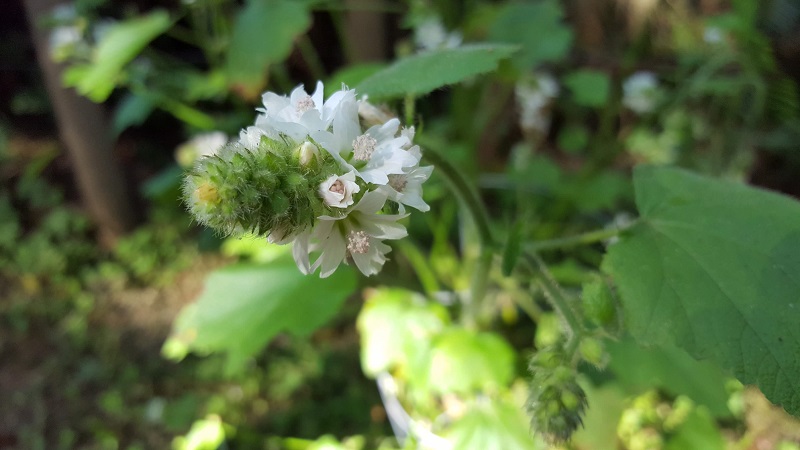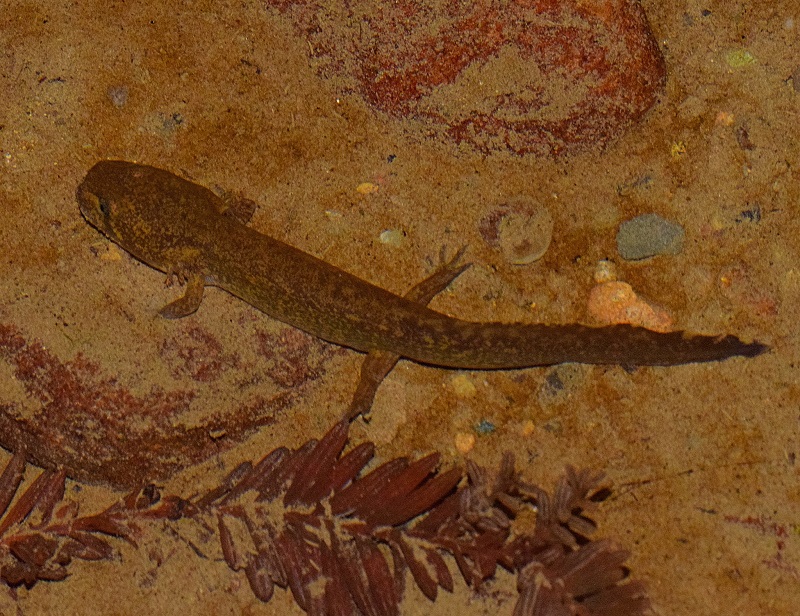
Sidalcea malachroides – maple-leaved checkerbloom
Submitted by Valeri Sinco
This little beauty was found by Valeri Sinco in Humboldt County. Sidalcea malachroides was originally listed in 1994 as a rank 1B (rare or endangered in California and elsewhere) and was more recently changed to a rank 4.2 (limited distribution in California; fairly endangered in California) in the California Rare Plant Ranking system. It is found in a multitude of habitats along the coast including broad-leafed upland forest, North Coast coniferous forest, riparian woodland, coastal prairies and coastal scrub. Sidalcea malachroides ranges from the Central Coast in California north along Oregon’s coast where it is also of conservation concern. It blooms from April to August, but early blooms have been found in March. Thank you, Valeri, for everything you do to help protect these plants and for sharing this beautiful photo!

Dicamptodon ensatus – California giant salamander
Submitted by Daniel Palmer & Tommy Kelley of the California Department of Transportation
This larval stage California giant salamander was staying nice and still for Daniel and Tommy. They found it near Fort Ross in Sonoma county. When this salamander is fully grown, it will display reddish-brown colored marbling. The California giant salamander lives up to its name being one of the largest salamander species in North America and are endemic to California. Its flat tail is designed perfectly for swimming which helps its short, stout limbs in the water. You can find this salamander in damp, coastal forests throughout Sonoma and surrounding counties as well as San Mateo and Santa Cruz counties. These critters eat anything they can overpower, including slugs and small invertebrates like birds and lizards! Its current distribution has not changed much from its historic distribution, but their native habitats have seen a lot of alterations. Currently, the database has 234 mapped occurrences throughout its range. Many thanks to Daniel and Tommy for snapping a picture of this species!
Do you have some great photos of rare plants or wildlife detections? Submit them along with your findings through our Online Field Survey Form and see if your photos get showcased!